Varkala
Popular for its pristine beaches and pilgrimage, Varkala is a small town in south Kerala
V
arkala is popular both as a pilgrimage center as well as a tourist destination.The temple dedicated to Lord Vishnu (Janardhana Swamy Temple ) , believed to be more than 2000 years old, is an important pilgrimage center for Hindus. Mausoleum of the social reformer - Narayana Guru - is located on the Sivagiri hill top in Varkala . The beach of Varkala is popular among both tourists and the pilgrims.
Lets as start from the orientation and access to Varkala. On the Kerala map, you can spot Varkala lie between Trivandrum (Thiruvananthapuram) and Quilon ( Kollam) - the two coastal cities of south Kerala.
There are about 17 trains operating in this route. Most of them are long distance express trains that offer connections to Varkala as from as far as Mumbai ( Bombay) and Delhi.
Quilon to Varkala by express train would take less than 30 minutes and the slower passenger trains ( a few operates daily ) could take a little over 30 minutes. For the Express trains it is the next station from Quilon. Trains stop for 2 minutes at Varkala railway-station.
Trivandrum to Varkala too the same set of trains operate. Trivandrum to Varkala it takes a little over 30 minutes for most of the express trains. For most of the express trains Varkala is the next station after Trivandrum.
Sivagiri in Varkala
As mentioned earlier there are many long-distance trains connect Varkala to larger cities of India.
If you are traveling from Goa , Netravathi Express ( Train No 6345 ) is a good option as it operate daily. There are about 6 other weekly/ bi-weekly express trains too operate in this route. That is , the Konkan route along the coastal line.
Similarly the New Delhi - Trivandrum Kerala Express ( Train No: 2626) connects Varkala with a number of major cities.
But many of the long distance express trains do not stop at Varkala. The next stop after Quilon is Trivandrum. So you've to either book for Trivandrum or Quilon while booking , better Quilon b because it the station before and close to Varkala than Trivandrum .
When you explore the list of trains to Varkala while reserving train tickets online, you may find only a limited number of trains in the options given.
Instead of Varkala , if you change your destination as Quilon ( or Trivandrum) you can see many more trains in the options list. That is because , while many trains pass by Varkala , the ones with a stop at Varkala only would be shown by the online reservation system.
That was about the train connectivity to Varkala.
It's possible to travel by bus too to Varkala. Distance from Quilon (Kollam) to Varkala is about 40 kilometers and from Trivandrum to Varkala is about 50 kilometers. From Quilon and Trivandrum , direct buses to Varkala are somewhat limited. Most of the long distance buses in this route ( Quilon-Trivandrum) are the state operated KSRTC bus service that ply on the National Highway 47 (NH 47). Every 10 minutes or so you can catch a bus in this route. Get down at Parippally or Kallambalam on NH 47. From these junctions you can easily get a local bus that goes to Varkala town ( about 10 kilometers).
The nearest airport is at Trivandrum, about 50 kilometers south of Varkala.
Though it is not a large city, a good range of facilities are available at Varkala. There are a few banks , ATMs, Hotels, Lodges , hospitals and travel agencies. The railway station and the bus stand are right at the center of the town. There are some hotels are lodges around the town area. The touristy ones are located more closer to the beach. They offer anything from Yoga to Ayurvedic treatments.
Service quality varies. So check the reputations before you check-in or pay. Sure that is a natural prudence one would apply before selecting any services from a touristy place.
In general Varkala is a large town with lots of village ambient still refuse to go. The area around the town is unique with its red laterite hills , paddy fields , backwaters and a beautiful coastline at the end of it all.
Attractions in Varkala: From a tourism perspective , the beaches of Varkala stand first. There are many uniqueness to these beaches. First of all it is a recently 'discovered' tourist destination. Means for quite sometime Varkala was in those lists of places secretly shared by seasoned backpackers. But things has changed. Now Varkala has a tourism identity of its own. But still Varkala retains its charm as a recently discovered destination.
The beaches are wide and arch shaped. Overlooking the beach is the steep cliffs with coconut palm groves all over it. During high tide the waves almost laps at the base of these cliffs. While the beach is sandy , the cliffs next to it is of reddish laterite. Geologists call these unique looking laterite hills as Varkala Formation. Most of the beach accommodations are located on these areas .
A freshwater spring - believed to be off medicinal qualities - crosses the beach before flows into the sea. One can spot many water sprouts on the hills , especially post monsoon period.
One can also spot some rocky outcrops on the beach as the water recedes.
This beach has some serious religious significance too for the Hindus. People come over here to do the last rites after the funeral of the immediate relatives. Thus the sea coast over here has earned the name Papanasam , literally means the destroyer of sins. This area of the beach is considered sacred ( where the main road from the Janardhana Swamy Temple ends at the beachfront ) . The tourist part of the beach is a few minutes walk towards north along the coastline, after crossing the medicinal spring.
One can see the whole paraphernalia typical of a tourist beach side, including the sign posts that warns one not to venture into sea when there are no lifeguards around.
While there are many roads that lead to Varkala beach , the one near the Janardhana Swamy Temple and the road leading to the Helipad area are the main access points to the beach.
Janardhana Swamy Temple is one of the oldest temples in India. The temple enshrines the idol of Lord Vishhu. The temple is at an elevation. A flight of steps lead to the compound. The sanctorum is inside a cloistered outer structure.
Ancillary shrines are located outside the main temple at its corners. The most interesting is the open shrine for the snake gods , located axial to the sanctorum. There are many idols of snake gods placed around the banyan tree. The twisting roots of the tree has practically engulfed many of these snake idols. That speaks of the antiquity. Quite a large part of the temple appears modern. But in general , especially the inside still retains the oldness.
The large temple pond with a zillion tiny fishes is located , just across the road. In fact the road to beach pass between the temple and the pond.
The temple and the pond is treated with reverence by the Hindus. Though Janardhana Swamy Temple is close to a beach community , this is no tourist monument. A board installed inside the temple compound says the admission inside the temple is restricted to followers of Hinduism. However there would not be any problem in seeing it from outside even if you are non Hindu. Dress modestly and observe the local customs ( no footwear inside etc ) . Ask people at the temple premise how close you can go just to see the temple. You would not offend anyone for seeking the clarification. Photography prohibited.
If one think that Varkala is in the an off the beaten path , imagine the off the beaten paths of Varkala!
Anjengo or Anjuthengu meaning 'Five Coconut Trees' in the local parlance. The three century old Portugese built fort that was later captured the Dutch and later by the then English East India Company and the cemetery inside is an interesting attraction. Other than this bastion Anjengo is a serene village blessed with a majestic lake and sandy beach ( a secret beach !).
Check out the lakes ( backwater lakes) at Nadayara and Kozhi Thottam near to Varkala.
One can make a short side trip to Manthara from Varkala . Take a view from the cliff or visit the local Krishna Temple. Of course there is the Thiruvambadi right down the cliff.
Parippally , the small town about 10 kilometers from Varkala , on the NH 47 is popular for the annual elephant procession. Many dozen elephants are brought for this festival from different parts of Kerala.
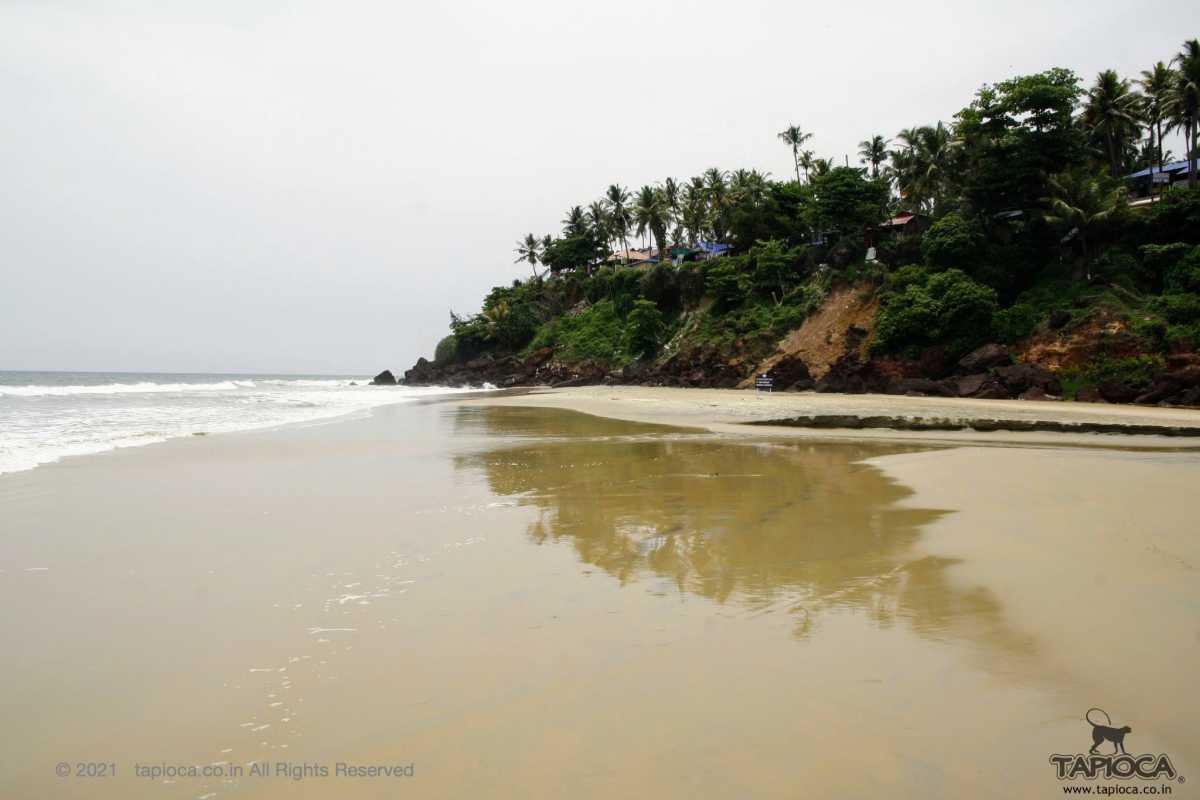
Varkala
Cliff that overlooks the beach in Varkala
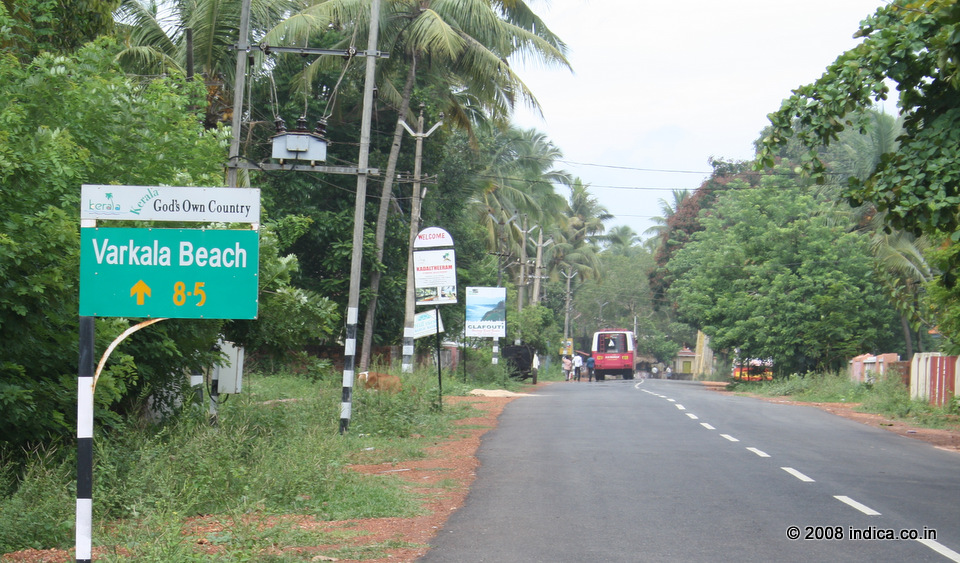
Beach in Varkala is at a short distance from the town square.
Beach in Varkala is at a short distance from the town square.
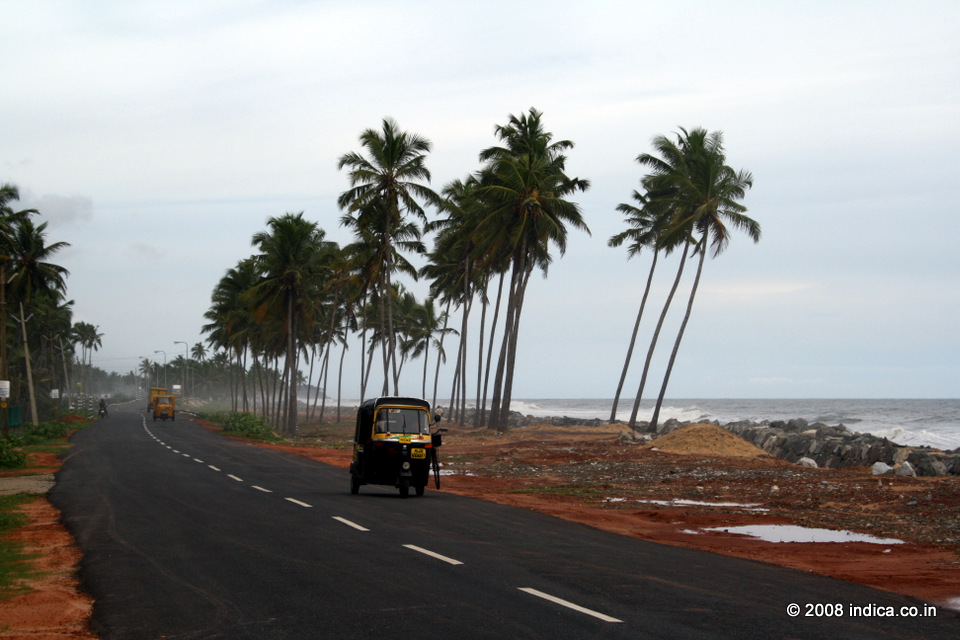
Road to Varkala along the coastal line
Road to Varkala along the coastal line
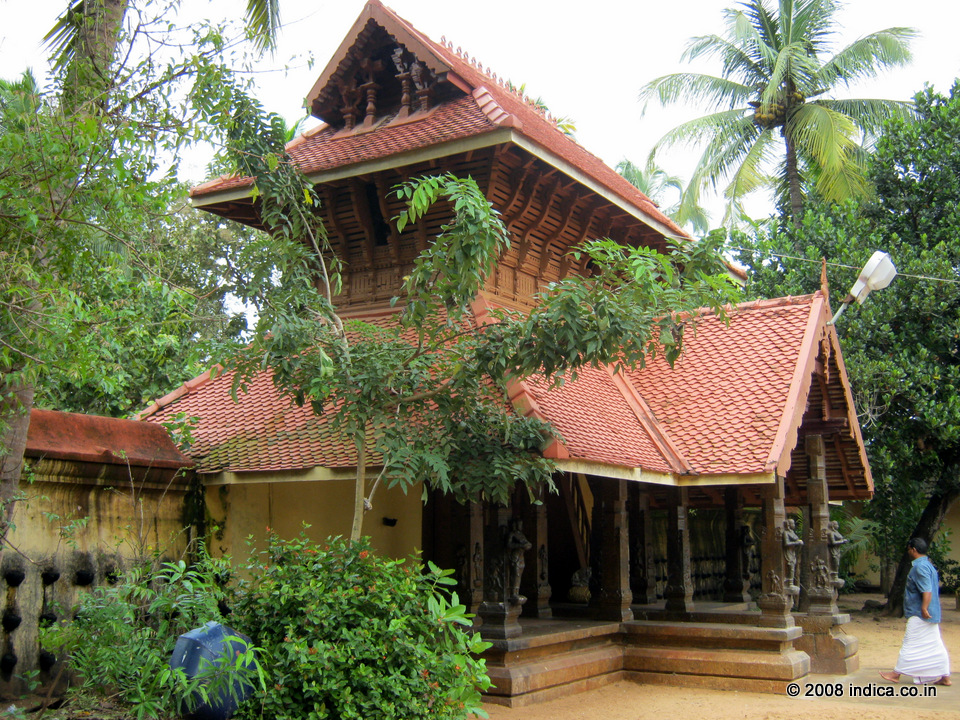
Gateway to the Janardhana Swamy Temple
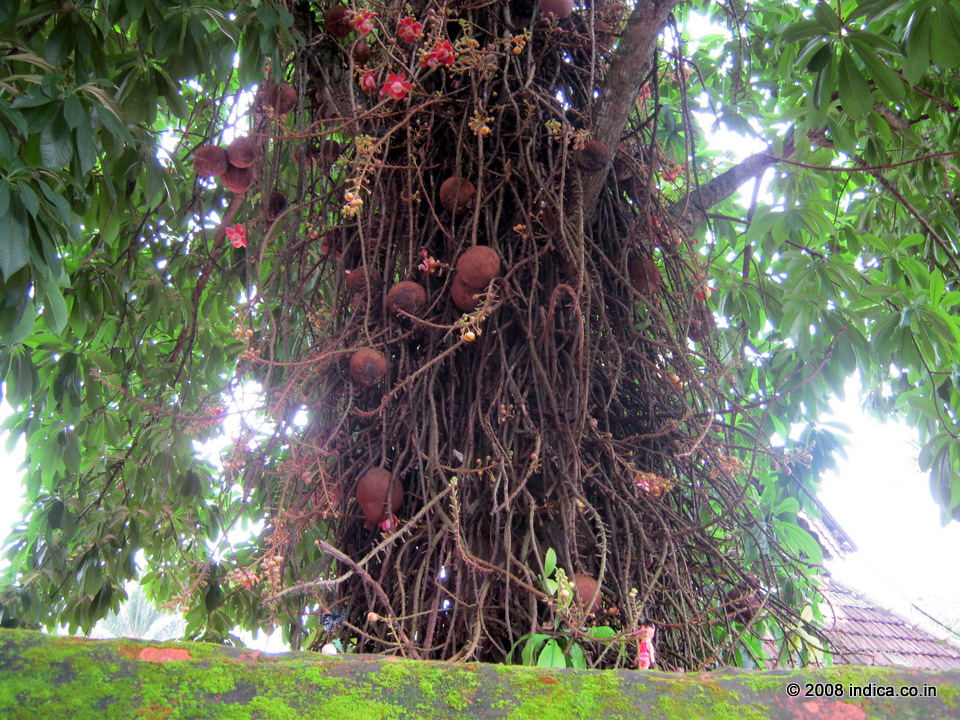
Cannon ball tree (Couroupita guianensis) athe Janarthana Temple in Varkala
Cannon ball tree (Couroupita guianensis) athe Janarthana Temple in Varkala
